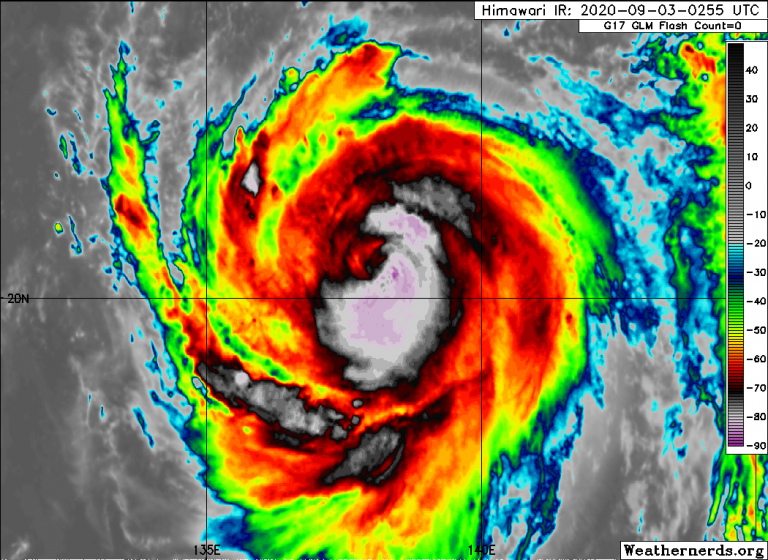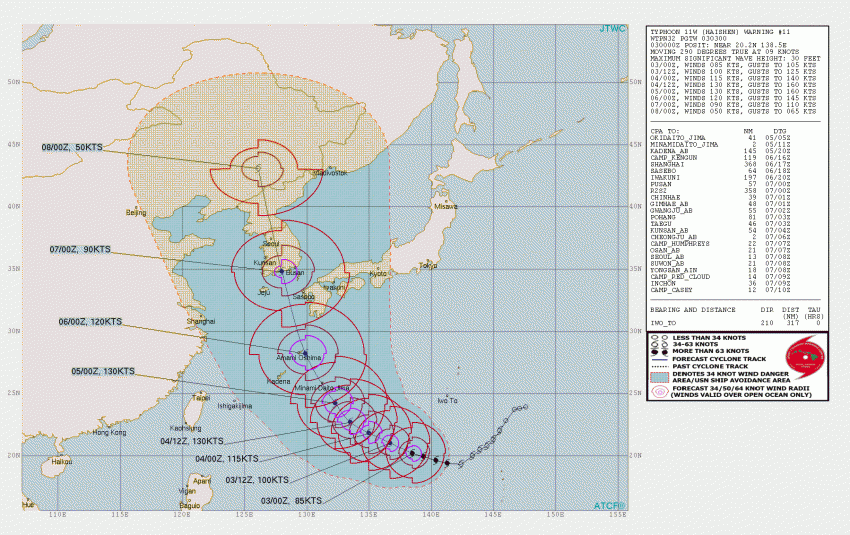Busy Western Pacific Pattern with Multiple Typhoons Battering Korean Peninsula

An especially active period of typhoon activity continues over the Western Pacific. South and North Korea will continue to be the main focal point for the worst impacts. These storms are coming on the heels of devastating monsoonal flooding earlier in August that claimed dozens of lives. Typhoon Bavi struck North Korea last week, followed by Maysak just today in South Korea. The third and strongest typhoon, Haishen, looks to strike nearly the same region by this weekend.
Kumejima’s waterfront lashed by wind and spray #typhoon #Maysak #japan pic.twitter.com/M2rsf6bR4F
— James Reynolds (@EarthUncutTV) August 31, 2020
Bavi reach Category Three status as it moved through the Yellow Sea last week. Fortunately it weakened just before landfall over north Pyongan Province on Thursday, 27-Aug. Minor damage was reported in China, South Korea and some of the southern Japanese islands. More serious impacts, including flash flooding as well as downed trees and powerlines, occurred near landfall in North Korea. Maysak peaked at Category Four intensity on Tuesday over the East China Sea. It was around this time that a livestock-carrying ship, the Gulf Livestock 1, was struck and feared lost with 43 crew and nearly 6,000 head of cattle. Like Bavi, Maysak weakened considerably before landfall but still caused wind damage and power outages for 200,000 households in south and east South Korea.

Typhoon Haishen is currently a Category One with maximum sustained winds to 85 knots (155 kph). However, rapid intensification is expected the next few days as the typhoon moves slowly west-northwest over very warm waters. Haishen will then accelerate and turn north-northwest towards the southern Japanese Islands (see forecast map above). Another South Korean landfall is expected this weekend, very close to the major port city of Busan. Like the other recent storms, some weakening is expected before landfall. However, the cumulative effect of monsoonal flooding and the recent typhoons has left the region vulnerable. Downed trees and powerlines will occur more readily over a densely populated area, leading to major disruptions.
